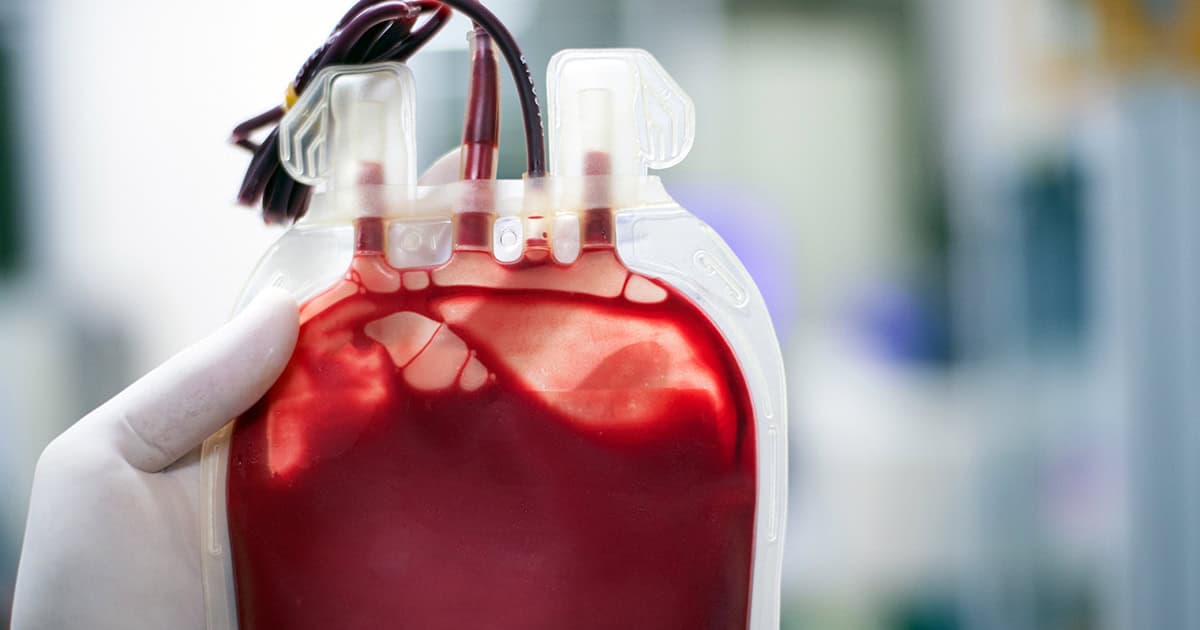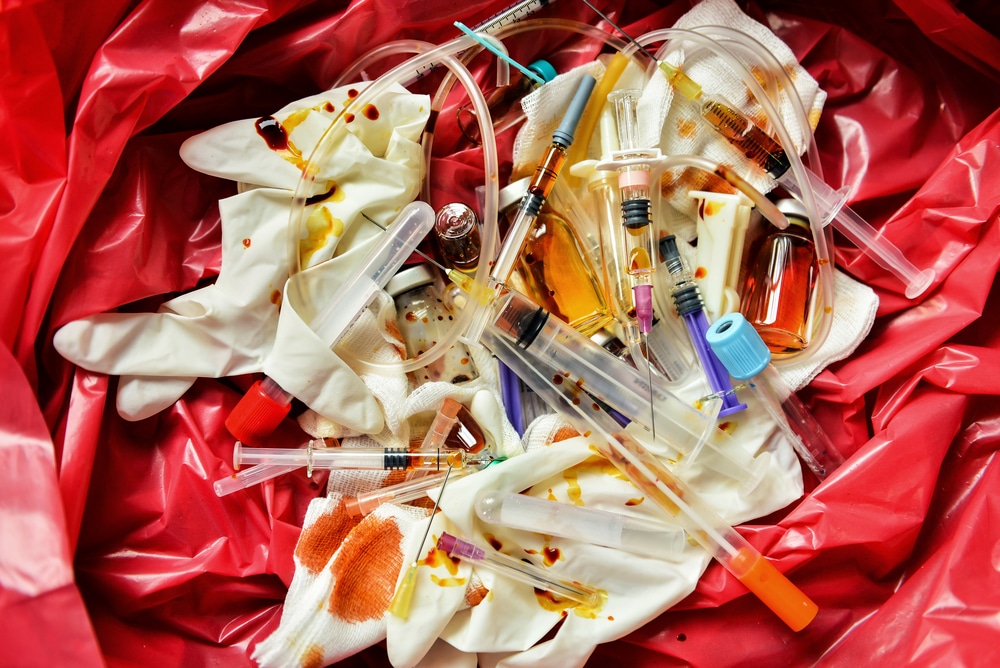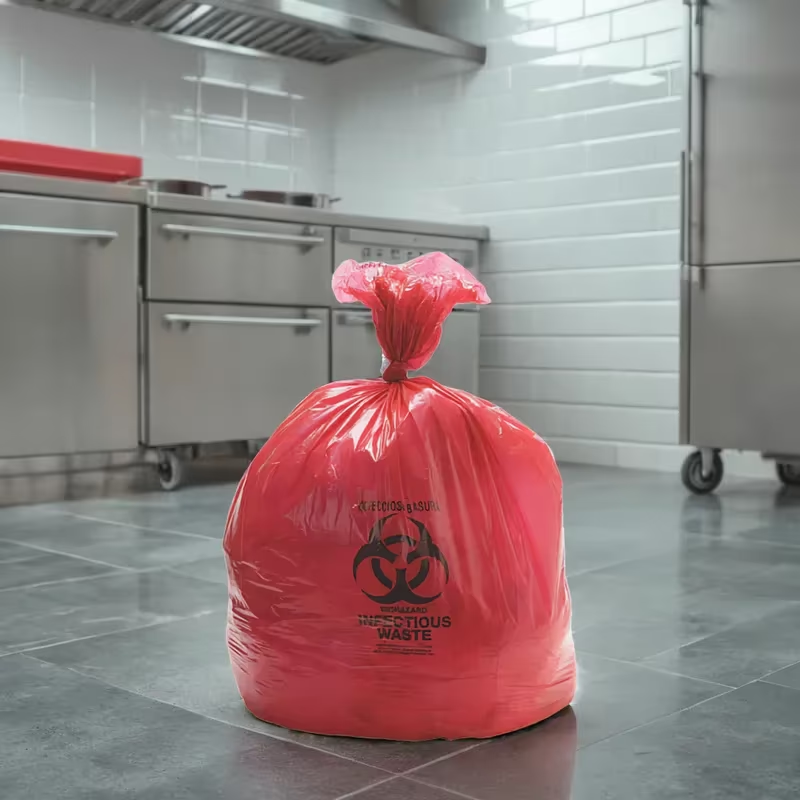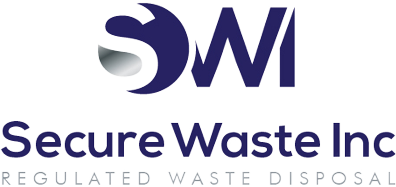Blood Bank Medical Waste: What To Toss And How To Do It Safely – Expert Solutions From Secure Waste
Blood banks handle life-saving blood products every day, but the work that happens behind the scenes comes with significant waste management challenges. Items like used blood collection bags, contaminated gloves, testing kits, and sharps accumulate quickly. If these materials are not handled correctly, they can cause accidental injuries, spread infections, and result in strict regulatory penalties.
The issue most facilities face is not a lack of awareness, but rather uncertainty about which materials must be discarded, how to categorize them, and the correct procedures for disposing of each type of biomedical waste.
A clear understanding of these waste categories and handling protocols is crucial for maintaining a safe work environment and ensuring compliance with healthcare waste regulations. With that in mind, let’s break down what needs to be disposed of and the safest way to do it.

When it comes to managing medical waste in blood banks understanding what to toss and how to do it correctly is crucial Proper disposal isnt just about compliance its about ensuring safety for staff patients and the environment In the fast paced world of blood banking its easy to overlook the intricacies of waste management However knowing which materials require special handling can make a significant impact From contaminated items to those requiring recycling lets dive into the essentials of safe disposal practices Join us as we explore practical strategies for managing blood bank medical waste equipping you with the knowledge to maintain a safe and efficient environment Your role in this process is vital together we can ensure that we dispose of waste responsibly while focusing on best practices
Types of Blood Bank Waste
Infectious Waste
This category encompasses materials contaminated with blood or blood products capable of transmitting infectious diseases. Items include used blood collection bags, tubing sets, filters, transfer packs, and any other supplies that have been exposed to donor or patient blood. Laboratory specimens, including serum samples and expired or rejected blood units, also fall within this classification.
Sharps Waste
Needles, lancets, phlebotomy needles, scalpels, and broken glass vials constitute sharp waste. These items pose dual hazards: puncture injuries and the potential for disease transmission. Even after use, hollow-bore needles can retain residual blood containing infectious agents. The Occupational Safety and Health Administration (OSHA) mandates that needle and sharp disposal be performed immediately after use in FDA-cleared, puncture-resistant containers. These containers must be easily accessible, maintained upright, and replaced when three-quarters full to prevent overfilling.
Chemical Waste
Blood banks utilize various chemicals for testing, preservation, and processing of blood. Reagents, stains, solvents, disinfectants, and anticoagulants used in blood collection become hazardous waste when they expire or become contaminated with blood. Chemical waste may exhibit characteristics defined by the Environmental Protection Agency (EPA) as ignitable, corrosive, reactive, or toxic. Preservative solutions, such as citrate-phosphate-dextrose-adenine (CPDA-1), and additive solutions, like AS-1, AS-3, and AS-5, require proper disposal when units are outdated or compromised. Similarly, testing reagents containing potentially hazardous substances must be managed in accordance with their Safety Data Sheets (SDS).
Pharmaceutical Waste
Expired medications, unused pharmaceuticals, and contaminated drug preparations fall into this category. Blood banks may handle medications administered during adverse donor reactions or therapeutic phlebotomy procedures. These substances require disposal methods that prevent environmental contamination and unauthorized access.
General Non-Hazardous Waste
Not all blood bank waste requires special handling. Paper products, packaging materials, office supplies, and food waste that haven’t come into contact with blood or hazardous substances can be disposed of through regular waste streams. Proper segregation of general waste from regulated medical waste helps reduce disposal costs and minimize environmental impact.
Disposal Guidelines & Regulations
Federal Regulations
Several key agencies oversee federal regulations governing the management of infectious and medical waste. The OSHA Bloodborne Pathogens Standard (29 CFR 1910.1030) mandates exposure control plans, engineering controls, PPE use, and employee training for all personnel exposed to blood or infectious materials. The EPA oversees hazardous chemical waste under the Resource Conservation and Recovery Act (RCRA), while the Medical Waste Tracking Act laid the foundation for current state-level rules. Additionally, the Department of Transportation (DOT) regulates the transportation of regulated medical waste (RMW), requiring proper packaging, labeling, and documentation under the UN 3291 classification.
State and Local Requirements
State environmental and health departments typically impose additional requirements beyond those set by federal standards. These may include registration or permitting of waste generators, specific packaging and labeling requirements, restrictions on treatment methods, and record-keeping mandates. Some states restrict particular disposal methods. For instance, several jurisdictions have prohibited medical waste incineration due to concerns about air quality, requiring alternative treatment technologies such as autoclaving, chemical disinfection, or microwave treatment.
Treatment and Disposal Methods
- Incineration remains effective for infectious waste, reducing material to sterile ash while significantly decreasing volume. However, environmental regulations have limited its availability and increased costs.
- Autoclaving uses pressurized steam at temperatures between 121°C and 134°C to sterilize waste. This method proves economical and environmentally preferable for many waste types, though rendered waste typically requires landfill disposal.
- Chemical disinfection employs EPA-registered disinfectants to decontaminate waste. Sodium hypochlorite solutions, peracetic acid, and other antimicrobial agents can effectively treat liquid waste and some solid materials.
- Alternative methods, including microwave treatment, thermal inactivation, and irradiation, offer additional options. These methods must demonstrate efficacy through biological indicator testing, typically using Bacillus atrophaeus or Geobacillus stearothermophilus spores.
Common Mistakes to Avoid
Inadequate Segregation
Mixing blood-related waste with general or non-infectious materials poses significant health hazards and results in increased disposal costs for blood banks. Placing routine waste, such as paper or packaging, into red biohazard bags inflates medical waste treatment expenses, while discarding contaminated gauze, blood-soaked materials, or used test tubes in general trash endangers housekeeping and sanitation personnel. Implement a clear, color-coded segregation system with visible signage throughout collection, testing, and storage areas. Red bags must be used exclusively for blood-contaminated infectious waste. In contrast, sharps, such as used needles, lancets, and glass slides, must be placed in rigid, puncture-resistant containers clearly labeled with the biohazard symbol.
Overfilled Containers
Allowing sharps containers to exceed their fill line significantly raises the risk of accidental needlestick injuries during collection and transport within the blood bank. Similarly, overpacked biohazard bags can tear or leak, exposing staff to infectious blood residues. Understanding how to dispose of sharps correctly is essential to preventing these hazards. Establish and follow a strict waste replacement schedule to ensure containers are sealed and replaced once they are three-quarters full. Staff must never attempt to compress or shake down waste to create additional space. Consistent monitoring helps maintain safe and compliant waste management practices across all areas where blood is handled.
Improper Labeling
Every waste container in the blood bank must be accurately labeled to specify its contents, generation date, and start date of accumulation. Infectious waste should display a red or orange biohazard symbol with black lettering to indicate potential exposure risks. Containers holding chemical reagents or disinfectants from testing procedures must display hazard and handling labels. In contrast, expired or partially used pharmaceutical items, such as anticoagulants or reagents, must be appropriately marked to prevent misuse or accidental exposure during storage and disposal.
Inadequate Storage
Improperly storing blood bank waste can result in contamination, unauthorized access, and the attraction of pests. All infectious and sharps waste must be kept in secure, weather-protected, and temperature-controlled areas, physically separated from blood storage and processing equipment. To prevent odor and microbial growth, ensure that waste is removed within the regulatory holding period, typically 30 to 90 days, depending on environmental conditions. Refrigeration may be necessary for liquid or temperature-sensitive blood waste, but freezing should be avoided, as it can damage containers and compromise safe handling.
Recordkeeping Failures
Accurate documentation is critical for maintaining compliance and traceability within a blood bank. Required records include biomedical waste manifests, treatment and disposal logs, staff training documentation, and reports of exposure or spills. Waste manifests must track all biohazardous material from generation to final disposal, providing both legal protection and accountability. Retain records as per regulatory mandates, generally between three and seven years, and consider implementing electronic recordkeeping systems to streamline compliance, improve accuracy, and ensure readiness for inspections or audits.
Training & Best Practices for Staff
Safe Handling Procedures
All blood bank personnel must consistently use appropriate personal protective equipment (PPE), including gloves, gowns, face shields or goggles, and closed-toe footwear, when handling blood or biohazardous materials. Needles should never be recapped or removed from syringes before they are disposed of. Safety mechanisms must be activated immediately after use, and all containers should be handled only by their outer surfaces to prevent accidental exposure or contamination.
Spill Response
Establish and maintain written protocols for managing spills of blood or other potentially infectious materials. Trained blood bank staff may address minor spills using approved biohazard cleanup kits, ensuring that all waste generated during cleanup is disposed of as regulated medical waste. This process is an essential component of waste management sharps disposal systems that prevent cross-contamination. Major spills require immediate evacuation of the affected area and intervention by specialized personnel using EPA-registered disinfectants proven effective against bloodborne pathogens such as HIV, HBV, and HCV.
Regulatory Compliance Training
All blood bank employees must undergo comprehensive initial and annual training on the management of sharps disposal waste, including waste classification, segregation, labeling, storage, transportation, and emergency response procedures. Training should align with the OSHA Bloodborne Pathogens Standards and local regulations governing the disposal of biomedical waste. Detailed records of all training sessions, including participant names, dates, and trainer qualifications, must be maintained to ensure compliance with audits and inspections, thereby ensuring accurate documentation.
How Secure Waste Assists Blood Bank Waste Disposal
Now that you know how to handle blood bank medical waste, we at Secure Waste Inc. are here to make the process even simpler, compliant, and secure. We specialize in blood bank waste disposal, offering complete solutions for the safe collection, transport, treatment, and disposal of biohazardous and sharps waste. Our team follows all OSHA, EPA, and DOT regulations to ensure your facility remains fully compliant. We provide customized medical waste pickup schedules, secure containers, and detailed documentation for every service. With our environmentally responsible methods, we not only help you maintain a safe and sterile workplace but also support sustainable waste management practices. Please get in touch with us today to schedule your service or request a complimentary consultation.

Expert Medical Waste Management: With over 25 years of industry experience, Secure Waste is a trusted local leader in hazardous and biohazardous waste disposal across Maryland, Virginia, and Washington, D.C. Specializing in medical waste management, sharps needle disposal, and biohazard waste removal, the company ensures full compliance with federal, state, and local regulations while prioritizing environmental sustainability.
The company also offers additional services, including secure document shredding and sharps container sales, providing comprehensive solutions for healthcare facilities and businesses. Our cost-effective services help clients maintain regulatory compliance without unexpected costs.
With a commitment to customer satisfaction, Secure Waste offers tailored waste management plans that align with industry best practices. Their team of experts provides reliable, timely, and compliant services, making them the preferred choice for medical waste disposal. For a free waste quote or more information, visit www.securewaste.net






